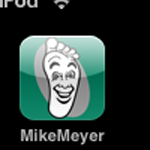Insightful piece about Android’s “openness.” The promise of Android as an alternative to Apple’s approach is severely diluted by the same device manufacturers and carriers that were holding the smartphone market back in the first place.
It’s important to remember that Android was never conceived solely as a consumer phone OS, it’s an OS for mobile device OEMs to use in building their devices. As such, the device manufacturers have ample motivation to bolt custom user interfaces and features onto the core OS, since everyone starts with the same core Android OS. For their part, the carriers are back to their old tricks of disabling the features they’d prefer to monetize, and promoting their own app stores. Only Verizon allows Skype on Android, for example. AT&T only lets you use the Android Market for apps, no side-loading or alternate sources.
Mind you, in the days when the carriers had total control of the app market, fewer than 3 percent of phone users ever bought games, personalization content, or apps for their phones. In contrast, over 30% of iPhone users buy apps for their phones. By detaching app purchases from the phone bill and providing superior merchandising for apps, Apple was able to develop a real marketplace for mobile software. The old ‘carrier deck’ was a terrible place for discoverability, was tightly controlled by people who were very tone deaf to the brands offering apps and games, and the pricing model ensured that anyone purchasing apps would get a nasty surprise when their phone bill arrived.
App restrictions aren’t the only place where the carriers are flexing their newfound muscle in the Android world. You are also at the mercy of the carrier to see whether your Android 1.5 phone will be upgradable to 2.2; if the carrier decides they’d rather upsell you to their newer phones and a new contract (with stingier data allocations), you are out of luck.
The real revolution of the iPhone was to do an end run around the chokehold that carriers had on the functionality of a phone. It was unheard of to have a phone that was completely disconnected from the carrier deck for on-handset purchasing. Apps that used the Internet seemed expressly designed to ding you with additional data charges, and things like VOIP were strictly off limits. It was also nearly unheard-of to be able to easily update the phone firmware and receive new device functionality on an older phone. The latest crop of Android phones is selling ‘openness,’ but the real goal is to put the genie back into the bottle, and more of your money into the carriers’ pockets.
